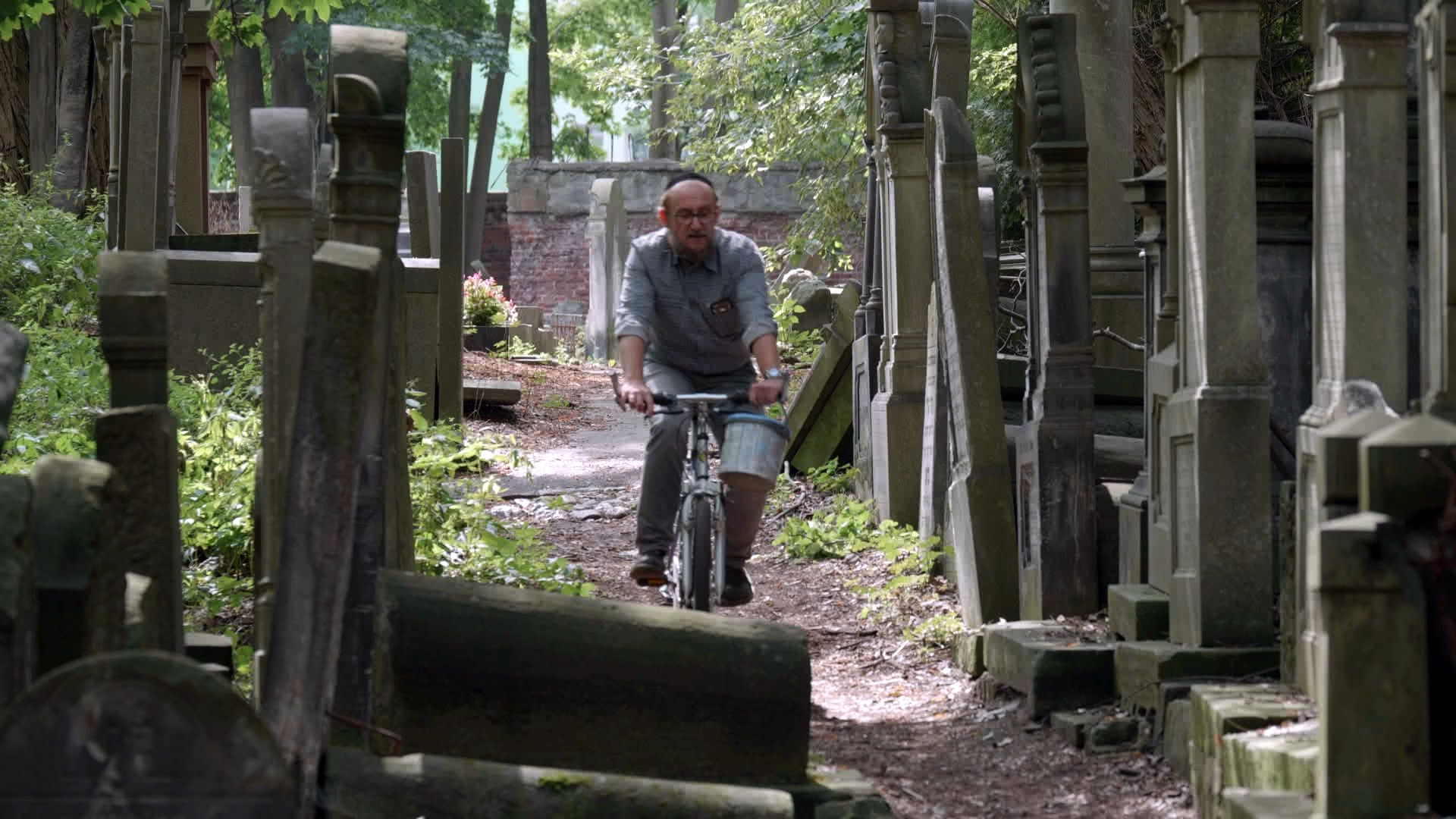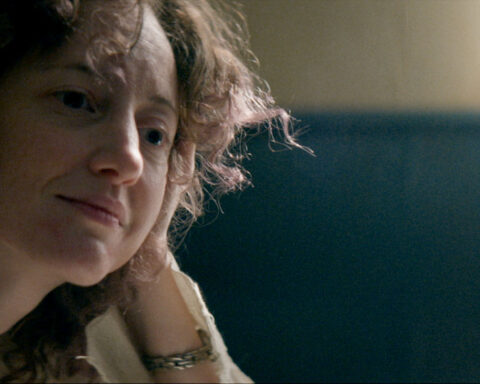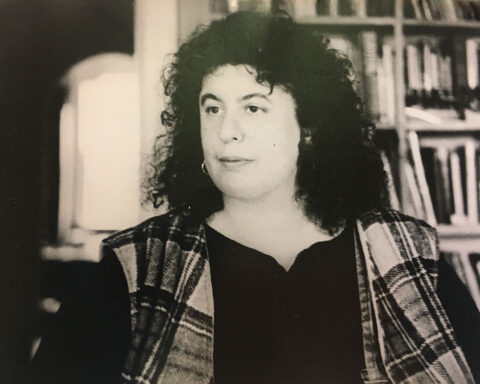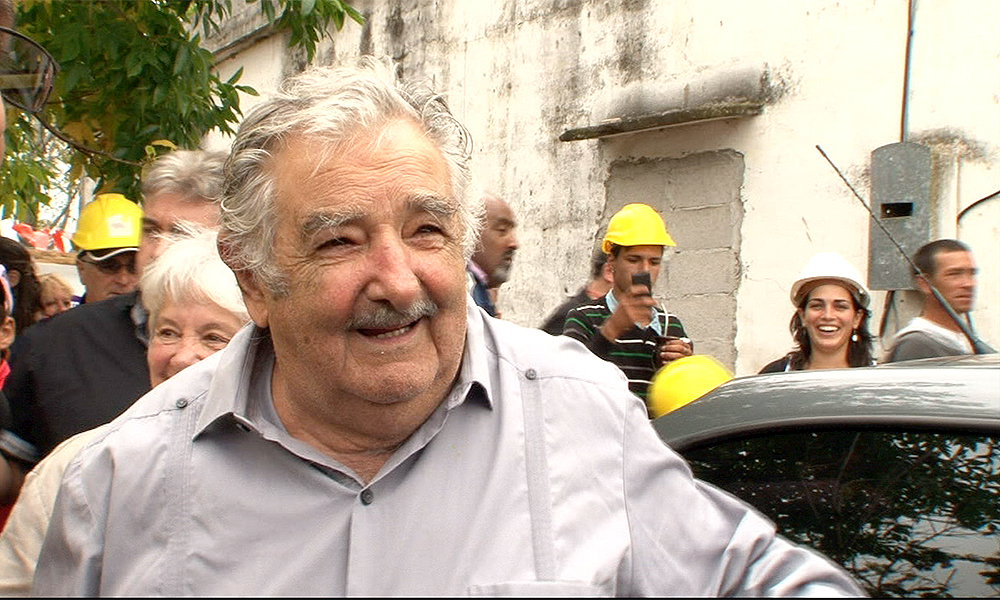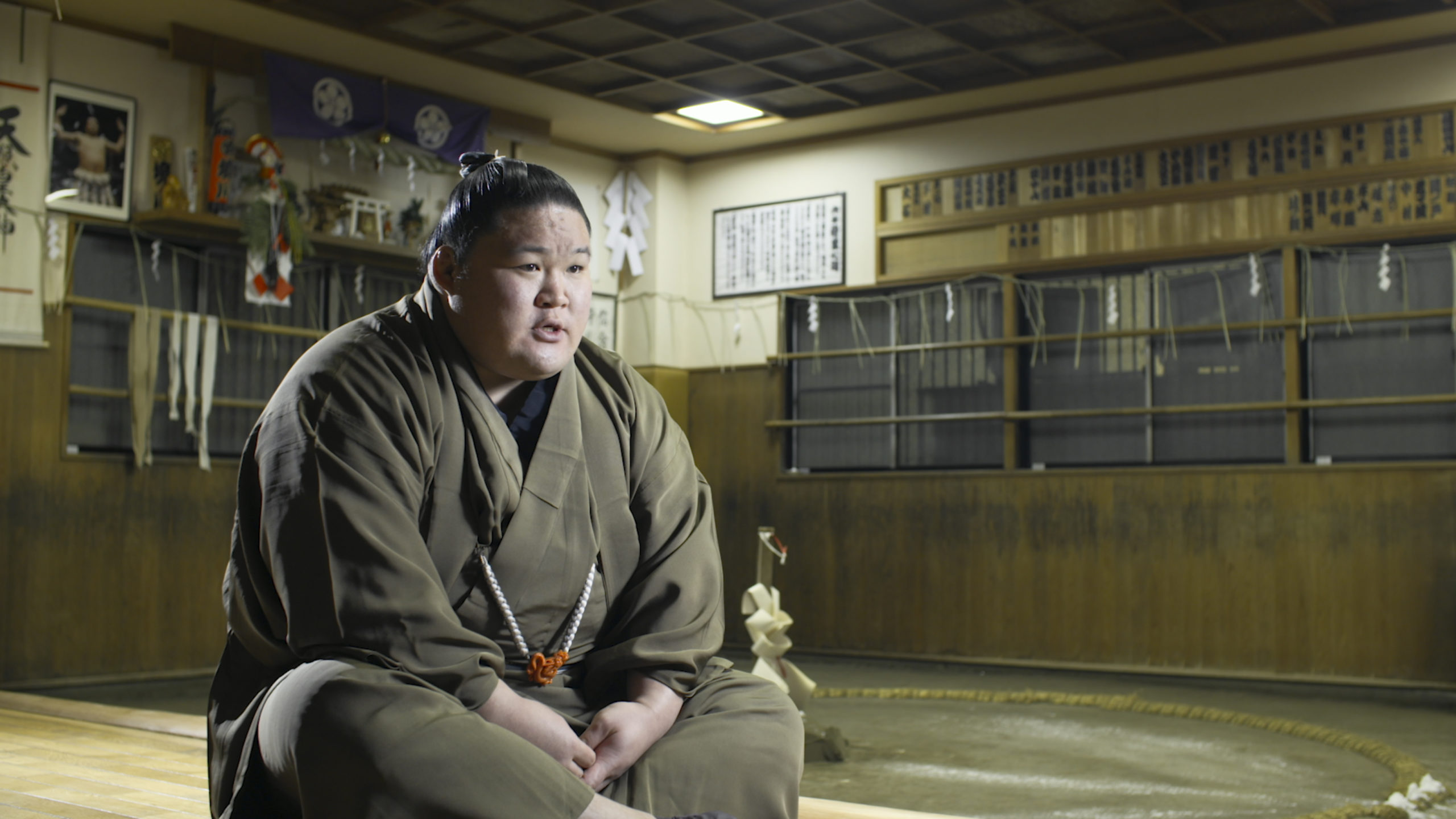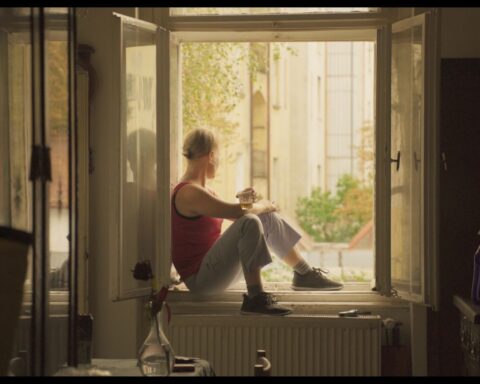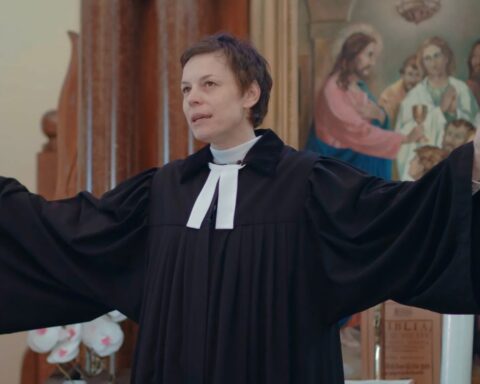Muranów is about a neighbourhood full of ghosts. The old Jewish district of the Polish city, Muranów became the site of the Warsaw Ghetto during World War II. Warsaw’s Jews were corralled into this neighbourhood and most were later sent to their deaths at Treblinka. The Nazis then burned Muranów to the ground.
In the documentary, Elzbieta Bednarska, Administrator of the Psychology Department at the University of Warsaw, stands on the roof of the building at the school. That building had once been the SS headquarters. She holds up a sepia-toned photo of a child standing in the same spot, looking out over the ruins of Muranów in 1945. The destruction in the photograph is so vast, it is difficult to visually parse that there could have ever been a city below this rooftop. In the photo, the rubble and dust lie in sloping mounds— at first glance appearing more like sand dunes than the remnants of a neighbourhood. One building stands amidst the dust: the Church of Saint Anthony where the Nazis stored stolen Jewish valuables.
Muranów is no longer rubble. Yet baked into the foundations of the buildings standing there today is something awful. After the war, the neighbourhood was rebuilt with the detritus left from the Nazi destruction. The film shows Beata Chomątowska, a Muranów researcher, watching post-war Polish propaganda films about the rebuilding of the district. Intercut with the black and white footage, Chomątowska explains that the broken bricks and rubble were mixed with the remains of the Jews who perished in the ghetto. The bones of Warsaw Ghetto Jews form part of the fabric of modern Muranów, therefore restoring the neighbourhood while haunting it with their ghostly presence.
Muranów shows how even the most horrendous events can, through a mix of time and forced ignorance, become mundane. Those who live in the neighbourhood are aware of its history. The documentary considers how they deal with that knowledge.
Numerous Muranów residents interviewed in the film admit to seeing ghosts in their homes. One resident, a millennial-aged architect, even named his apartment’s ghost Rachella. A local manicurist describes her clients’ run-ins with the ghosts of Jewish children. Despite the far-fetched nature of these stories, the film does not judge the residents. Rather, seeing ghosts seems to be a logical response to living in a place with such a murderous history.
The film does not shy away from stark juxtapositions between Warsaw’s horrific past and the tensions of the city’s present. The rise of Poland’s modern far-right is represented throughout the film. We see uncomfortably casual instances of antisemitism from interviewees. These instances echo footage of far-right protests included in the film. This all suggests that the slogan “Poland belongs to the Poles” is not uncommon.
Muranów is a deeply visceral exploration of how the spirit of a city manifests not just through its buildings and artifacts, but through the people who live there now. As the ghosts of the Warsaw ghetto are ever present, Muranów shows how Poland is still haunted by antisemitism.
Muranów screens at the Toronto Jewish Film Festival June 7 and 8.




